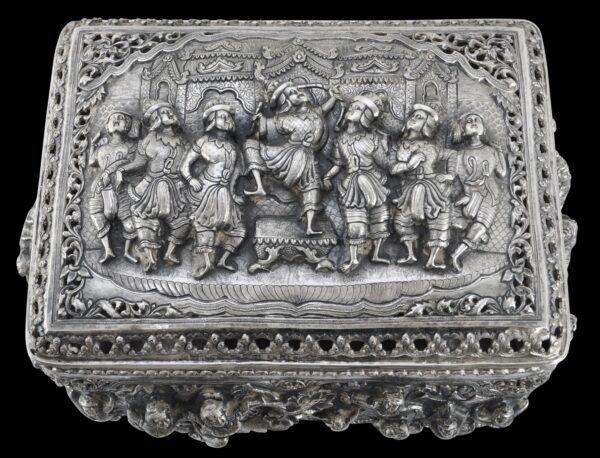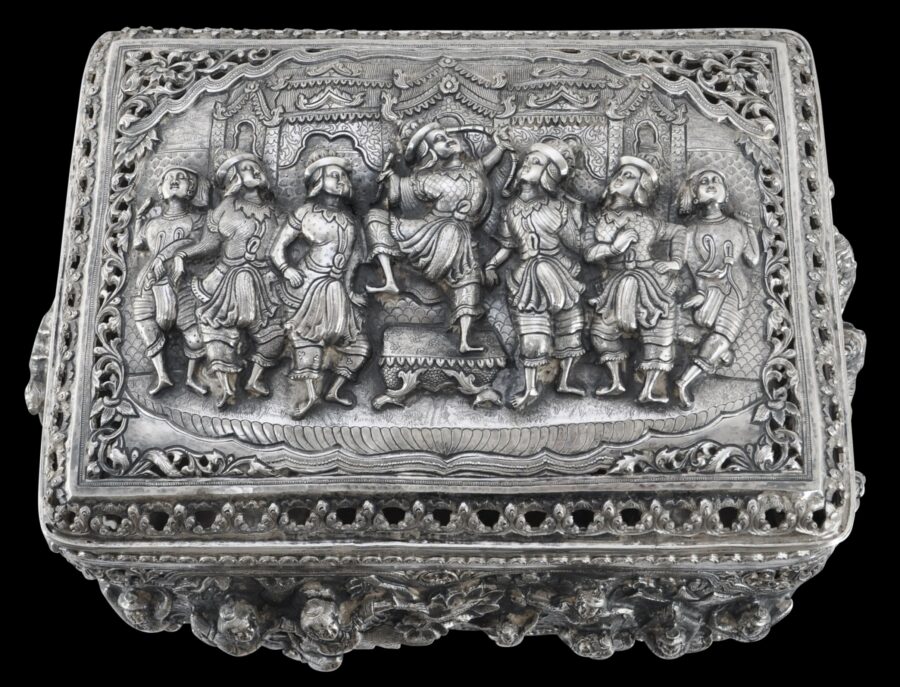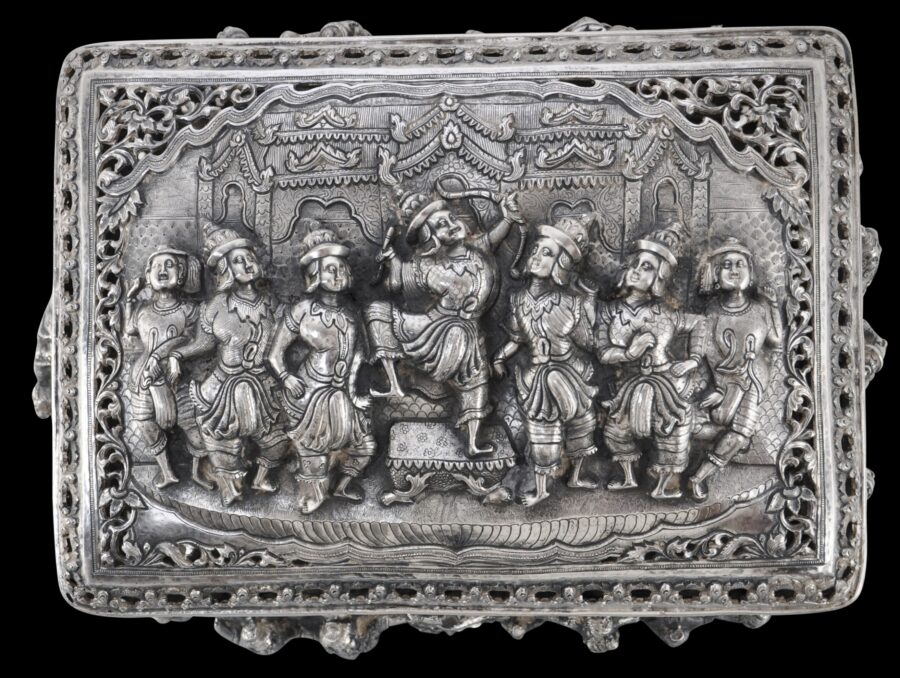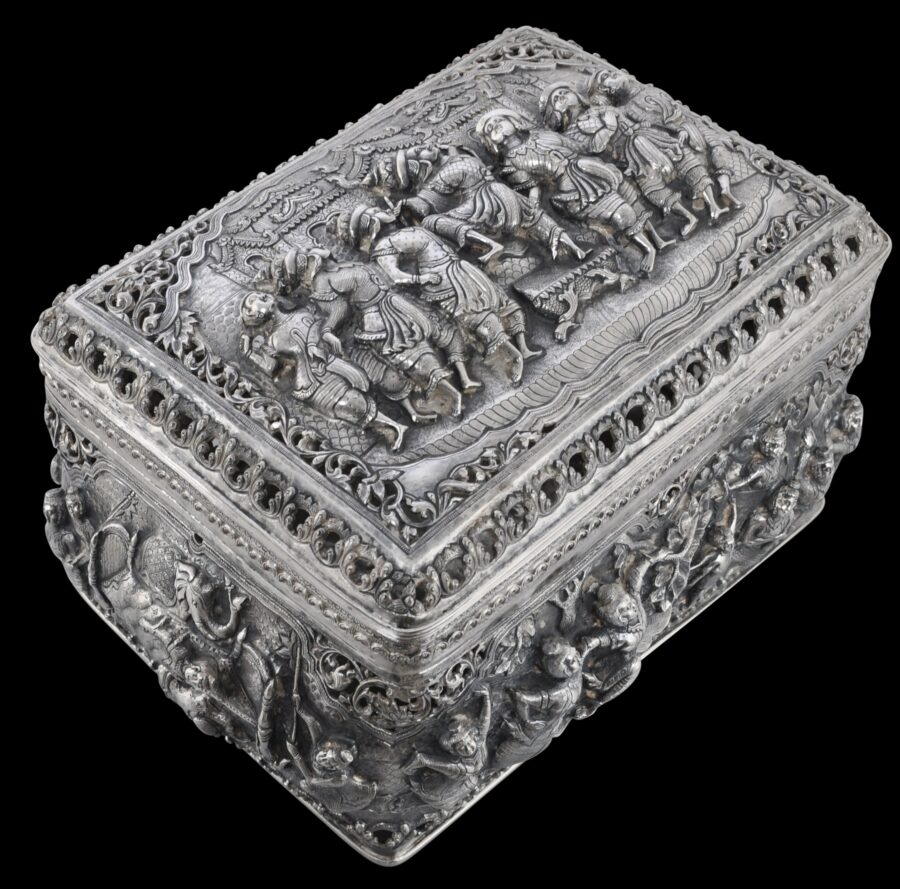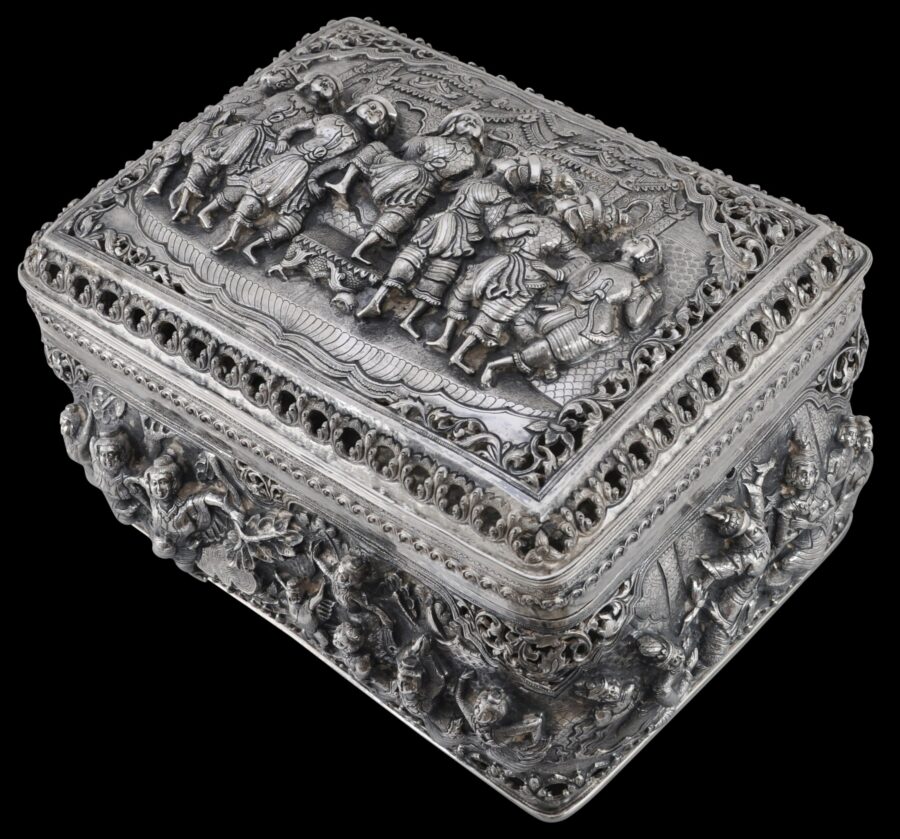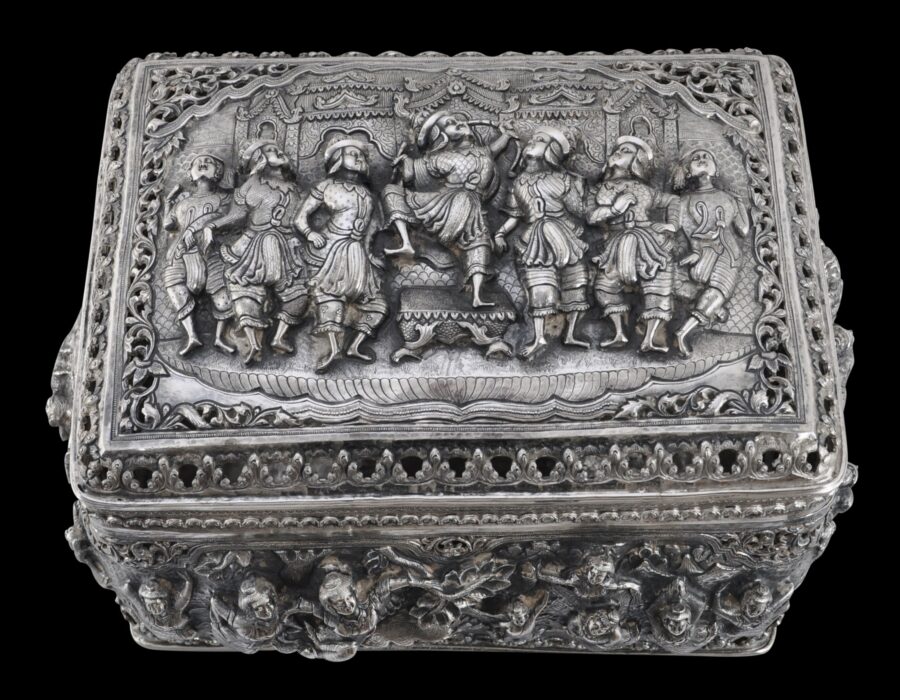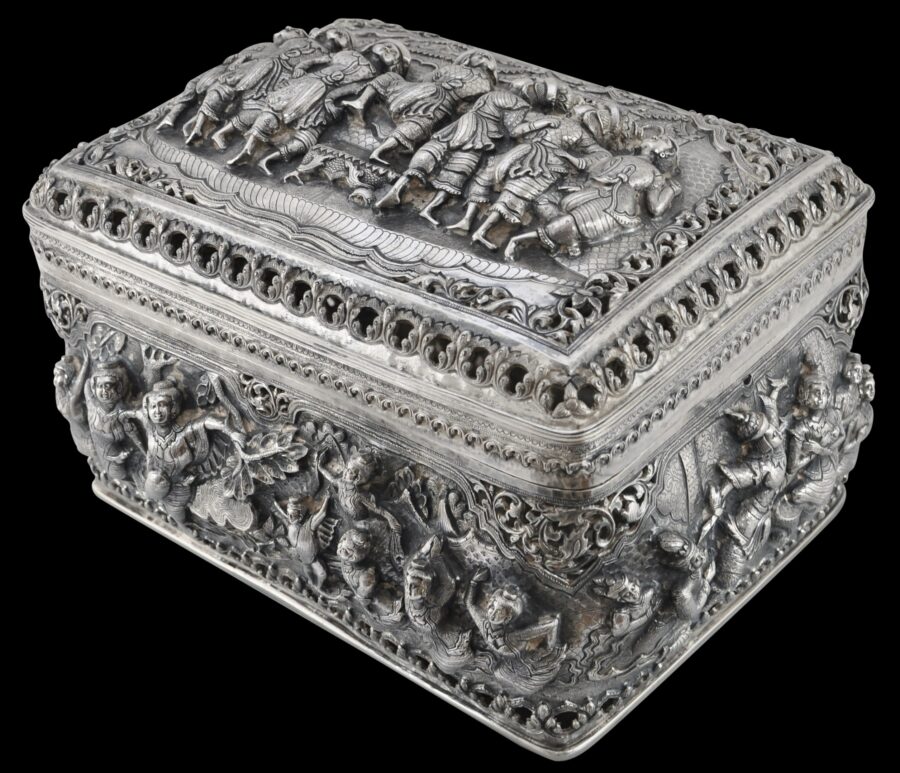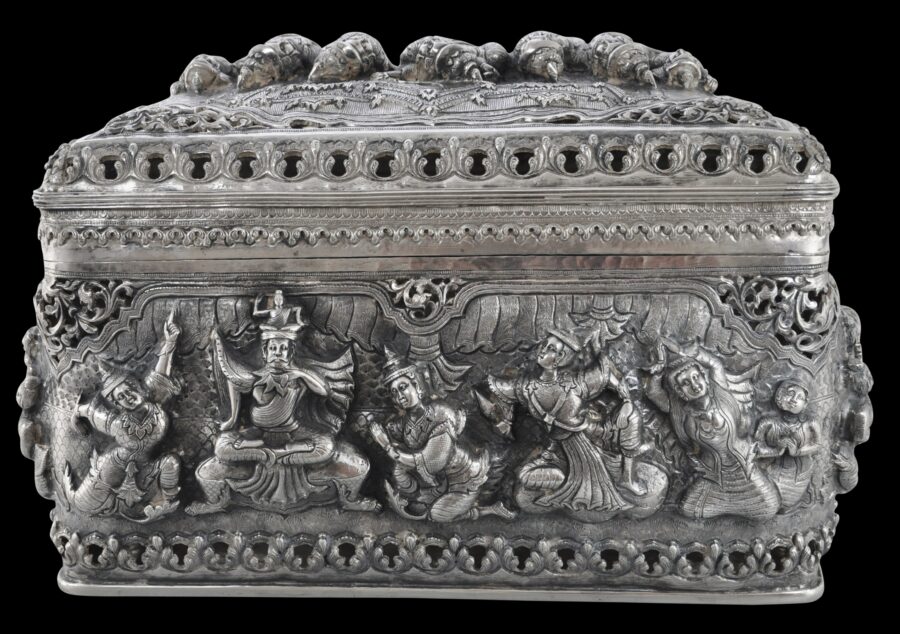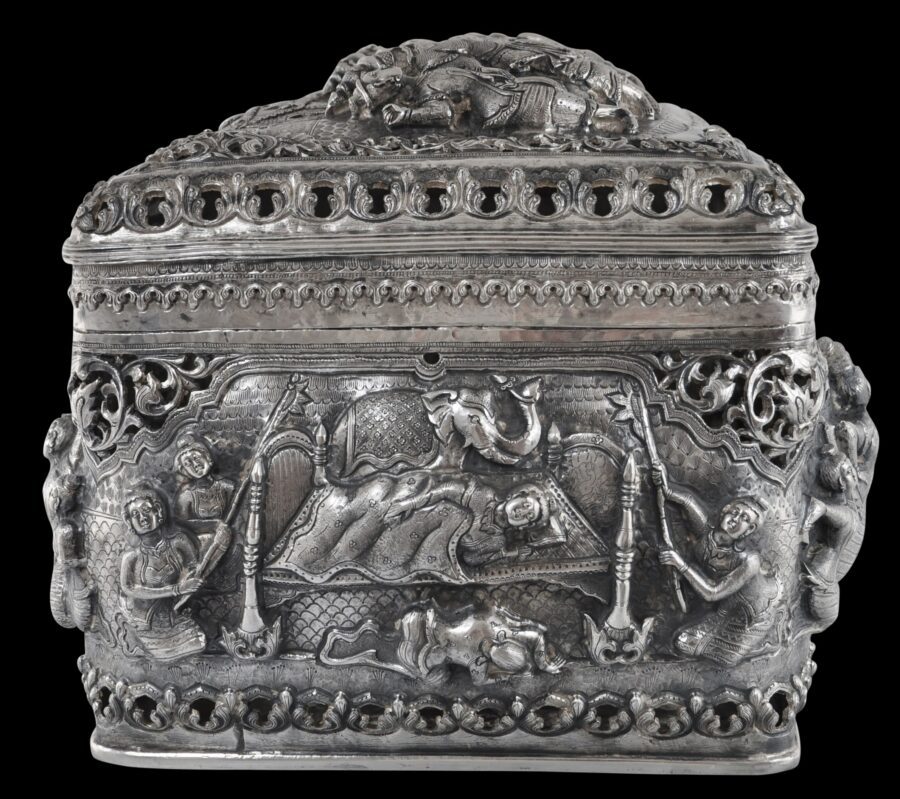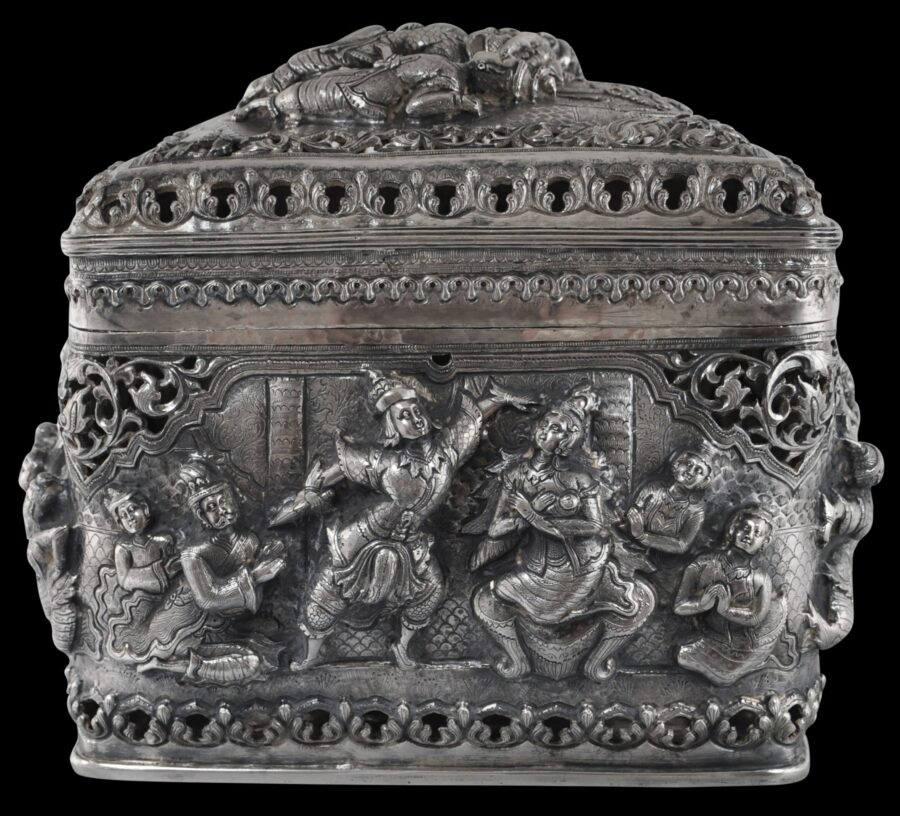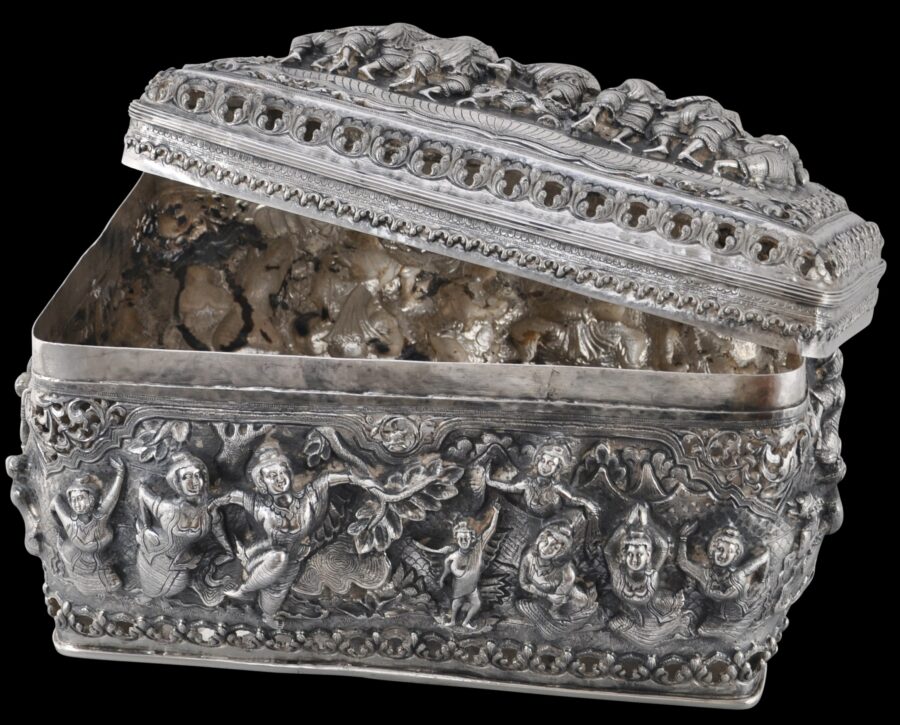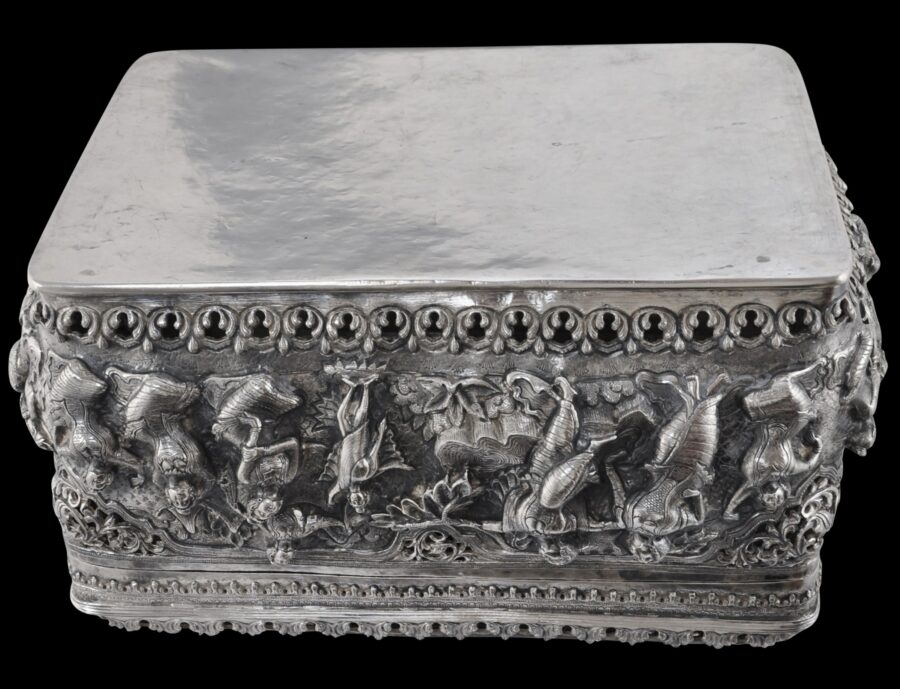This monumental box, which weighs almost four kilograms, is of unusually high-grade silver for a Burmese silver item. It is decorated in particularly high relief with scenes from the Burmese Buddhist narratives.
The cover of the box shows a central figure – most probably Siddhartha Gautama (the prince who would become the Buddha) – about to participate in, or just having won, the archery contest. He stands on one foot on a typical Burmese dais but with European claw feet as befitting the colonial period. Such a dais with claw feet can be seen in a bowl in Green (2022, p, 106). Three figures stand on each side of him.
Another scene on one side of the box shows a figure laying on a bed while being fanned by servants and with an elephant behind. Most probably, this is Maya, the mother of Buddha, with the Buddha-to-be appearing to her in a dream in the form of an elephant that descends from heaven and enters her womb from her right side. (The elephants is supposed to have six tusks and indeed here, the tuck is shown as far thicker than might be expected, suggesting multiple tusks.)
Another scene deals with the proclamation of the Buddha’s birth. According to some traditions, the proclamation was made by the Buddha himself who stood up shortly after having been born, took seven steps, and said ‘I alone am the World-Honored One.’ He then pointed up, to heaven, with one hand and down, to earth, with the other. The princely figure shown in this scene appears to have adopted that gesture.
Another shows a sage-like character with a figure on his head. This is most probably the hermit ascetic Asita (also known as Kala Devala or Kanha Devala) who is asked by the infant Siddhartha’s father Suddhodana to predict the future of the Buddha-to-be and is sometimes seen with the infant Buddha on his head.
The cover, which is not hinged, is domed slightly and is bordered by pierced work.
The base is of plain, hammered silver.
A smaller box but of similar form, illustrated in Owens (2020, p. 55), has a Burmese inscription and date which is equivalent to 1911.
The box has clear age. The detailing across the surface has been softened with wear but all the detail remains sharp nevertheless. This is an excellent, monumental example of colonial Burmese silversmithing. It was sourced from within the UK and almost certainly has been in the UK since colonial times.
References
Fraser-Lu, S., Silverware of South-East Asia, Oxford University Press, 1989.
Fraser-Lu, S., Burmese Crafts: Past and Present, Oxford University Press, 1994.
Green, A., Burmese Silver from the Colonial Period, Ad Illisvm, 2022.
McGill, F., pers. comm.
Owens, D.C., Burmese Silver Art: Masterpieces Illuminating Buddhist, Hindu and Mythological Stories of Purpose and Wisdom, Marshall Cavendish Editions, 2020.
Tilly, H.L., The Silverwork of Burma (with Photographs by P. Klier), The Superintendent, Government Printing, 1902.
Tilly, H.L., Modern Burmese Silverwork (with Photographs by P. Klier), The Superintendent, Government Printing, 1904.


